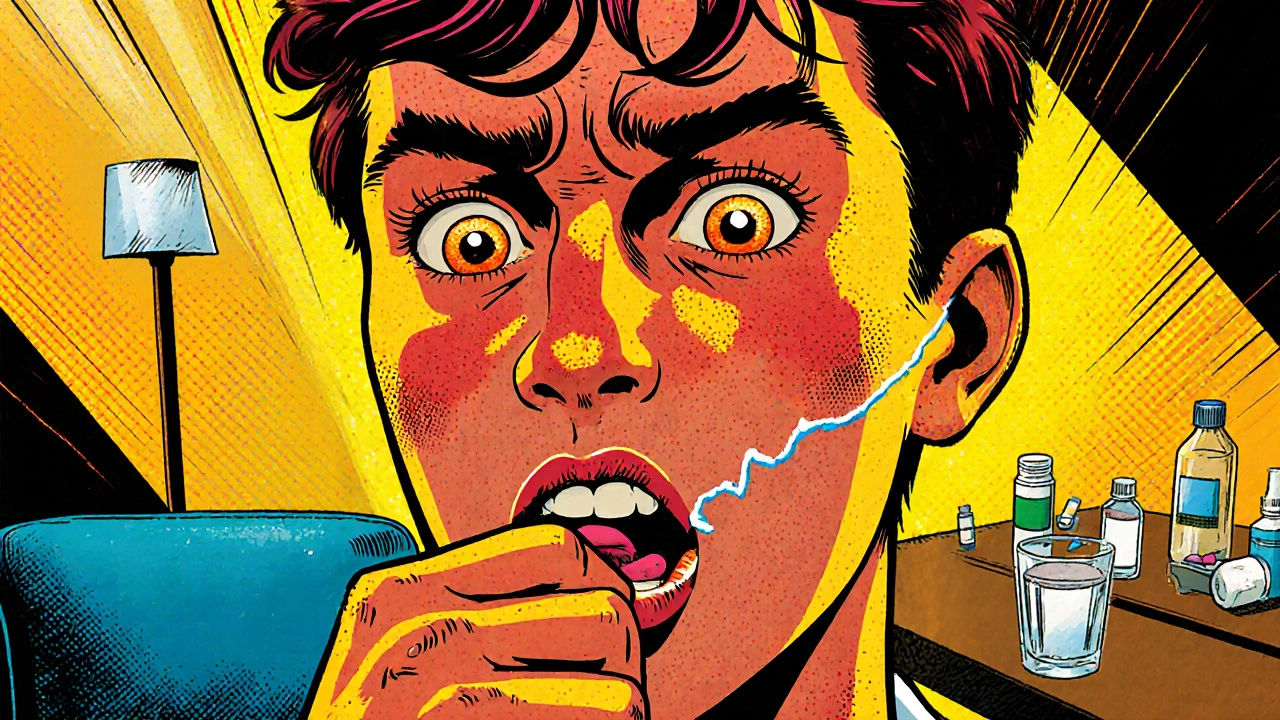
Amitriptyline Overdose: Recognizing Signs, Symptoms & Emergency Treatment
Learn how to spot early and severe signs of amitriptyline overdose, what immediate steps to take, and the medical treatments that can save a life.
When dealing with amitriptyline overdose, the dangerous result of taking too much of the tricyclic antidepressant amitriptyline. Also known as TCA poisoning, it can cause life‑threatening heart and brain effects. Tricyclic antidepressants are a class of mood‑lifting drugs that include amitriptyline, and poison control centers guide emergency care. Amitriptyline overdose encompasses severe cardiac toxicity, disrupts normal heart rhythm, and may trigger seizures. Managing an amitriptyline overdose requires prompt decontamination and aggressive monitoring. Tricyclic antidepressants increase the risk of seizures in overdose, so early seizure control is a key step. These relationships mean that any suspicion of overdose should trigger an immediate call to a poison control hotline.
People who ingest a large amount of amitriptyline often experience a cluster of symptoms that can be grouped into three domains: cardiac, neurological, and anticholinergic. Cardiac signs include a widened QRS complex on ECG, rapid or irregular heartbeat, and low blood pressure. Neurological clues range from confusion and agitation to full‑blown seizures or coma. Anticholinergic effects show up as dry mouth, flushed skin, dilated pupils, and urinary retention. Because the drug blocks sodium channels, the heart may develop a life‑threatening rhythm called ventricular arrhythmia. Recognizing these patterns quickly is vital; the longer the heart stays in a toxic state, the harder it is to reverse the damage. First‑aid measures focus on stabilizing the airway, breathing, and circulation, then giving activated charcoal within the first hour to limit absorption. In a hospital, sodium bicarbonate infusion is the cornerstone treatment for correcting the widened QRS and improving cardiac conduction. If seizures occur, benzodiazepines are given to stop the convulsions. The entire chain—from symptom recognition to targeted therapy—highlights how amitriptyline overdose intertwines with broader overdose management principles and why specialist poison control advice is indispensable.
Preventing an amitriptyline overdose starts with safe storage, clear dosing instructions, and awareness of drug interactions. Older adults, who often take amitriptyline for chronic pain or insomnia, are especially vulnerable because of kidney or liver changes that slow drug clearance. If you suspect an accidental or intentional ingestion, call your local poison control center right away—time is the most valuable resource. The articles below dive deeper into each aspect of the condition: detailed symptom checklists, step‑by‑step emergency protocols, and guidance on long‑term monitoring after an overdose event. Whether you’re a caregiver, a health‑professional, or someone looking for reliable information, the collection ahead will equip you with the knowledge to act fast and stay safe.

Learn how to spot early and severe signs of amitriptyline overdose, what immediate steps to take, and the medical treatments that can save a life.